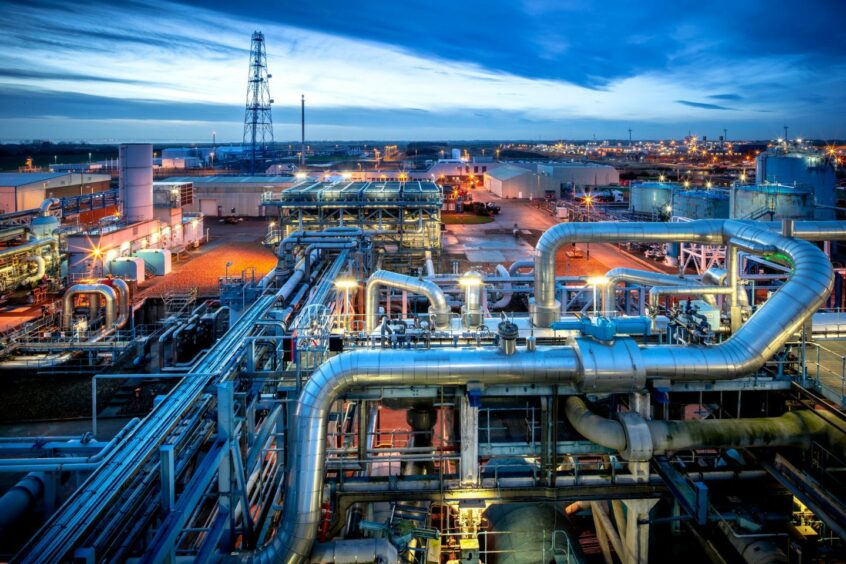
Centrica’s application to reopen the Rough gas storage facility was welcomed by energy observers, but some have raised questions over the site’s safety and effectiveness.
Amid soaring gas prices, the UK’s lack of meaningful storage capacity has long been lamented by energy market observers, policymakers and politicians. Chief amongst their complaints is the closure of the Rough gas storage site off the Yorkshire coast in 2017.
The facility – comprising two offshore platforms on the Rough gas field (47/3 Bravo and 47/8 Alpha) linked to a gas processing terminal at Easington – previously accounted for 70% of the country’s gas storage but was shuttered by operator Centrica Storage as running costs became too expensive to justify without support.
The government’s decision not to intervene was flagged at the time as a potential strategic oversight – and could even now threaten the fortune of Tory leadership hopeful Liz Truss, who was recently questioned over her role in the process during her time at the Treasury. (Ms Truss’ campaign has denied her involvement in the decision.)
Centrica’s initial request to reopen the facility in June was therefore welcomed by policymakers and market observers alike as a key tool in offering flexibility and security in the face of ever-rising gas prices, and reports have suggested the storage site could be operational as early as the start of September.
Under current permits the company would be allowed to operate a capacity of 28 billion cubic feet (0.8 billion cubic metres) over this winter and 59 bcf (1.6 bcm) during winter 2023/24.
Centrica said it will reopen the facility in stages, following previous concerns over the site having reached the end of its design life.
However, those concerns have been echoed by some analysts who cautioned there are “many questions” over how realistic it is to expect even 25% of its 100bcf capacity to be operational this winter.
Integrity questions
Writing in a recent blog post, energy consultant and Watt-Logic director Kathryn Porter points to the series of well barrier failures and infrastructural issues that prompted the facility’s closure.
Citing analysis published by the Competition & Market Authority at the time, she writes: “The only technically viable option for reducing the risk associated with injection operations using the existing Rough wells and infrastructure to an acceptable level was considered to be abandoning the existing Rough wells, drilling new wells, and substantially rebuilding the both offshore and onshore infrastructure. The required investment was deemed to be uneconomic.”
As it stands, the remediation work was not carried out, and Ms Porter notes that stresses on these wells are only likely to increase during the process of gas injection due to the effects of pressure and temperature.
Moreover, nearly 7 bcm of residual “cushion gas” has been produced from the field since its closure – more than the 5bcm that was estimated at the time of the decision – raising questions over the remaining pressure within the field.
As a result, Ms Porter questioned whether Rough can be operated safely without extensive remedial work, and how much cushion gas would have to be re-injected before the facility could achieve reliable withdrawal flows.
Now already in August, she said there is “little enough time to inject working gas volumes, let alone cushion gas,” before winter demand picks up.
Other measures such as compressors, or operating the facility at lower pressures could enable operations to proceed, she posited, but said there “must surely be question marks over the reliability of the facility” if it does indeed succeed in opening in time for this winter.
Speaking last week, a Centrica spokesperson said: “The safe operation of Rough is always our main priority.
“We have operated this asset for decades and know it very well. Significant investment in the asset has continued following the decision to cease storage in 2017.
“The main reason we could return Rough is that we would increase its capacity in phases, ahead of each winter, so that we can carry out any required work to allow capacity to be increased safely.”
Whatever the strategy employed, regulators are apparently on board, with Centrica’s approach reportedly having been signed off by Health and Safety Executive (HSE) according to the Daily Telegraph.
19 days
Despite questions over its reliability, there is an urgent need for the flexibility a site such as Rough can offer.
“Even at a quarter of capacity, re-opening Rough would increase Britain’s gas storage capacity by just over 1.5 times,” Ms Porter notes, adding that at its previous withdrawal rate of 44 mcm per day, Rough could meet between 9.5-12% of peak daily gas demand.
If filled, the facility could operate at this level for 75 days, just under half of the winter period, though at 25% capacity this would last just under 19 days.
“In other words, the best we could hope for would be for Rough to meet 12% of demand over a 19-day period (or 9.5% during extreme cold spells when the gas would be most needed),” she said.
The North Sea Transition Authority (NSTA) will be next to weigh in on the facility’s operation, and if cleared, a clearer picture of operations will begin to emerge.
Even if plans are expedited however, time to fill stocks is already running short.
“At best we can hope that Rough will provide some limited support to the market on the coldest days…let’s hope there are not too many of those,” she concluded.
Recommended for you
